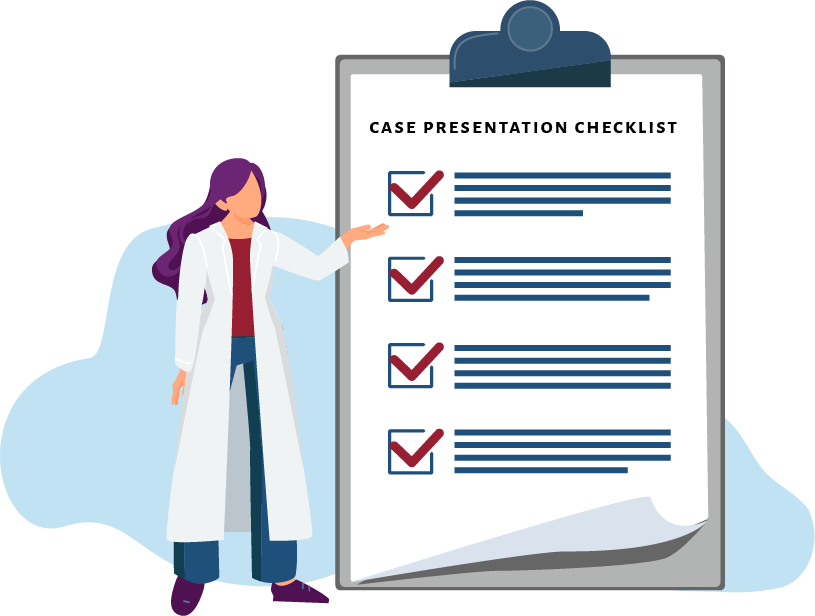In the 501 term, students practice telling a story. The goal is to practice talking in front of others and putting together information that is meaningful. In the 502 term, the story telling becomes more refined and the student is more skilled at providing relevant information that helps formulate a differential diagnoses. The first two terms will lay the foundation for formal training in oral presentation that comes in the 503 term.
Download a blank Case Presentation Checklist as a Word document.
Relevant information
Exposition
- Who is the patient?
- What is the problem?
Clear opening statement that includes the chief complaint (in the patient’s words).
Not done
Partially done
Done
History
Rising action
Building tension: What is going to happen?
HPI
Who is the patient? (demographics, risk factors)
Not done
Partially done
Done
When did it start?
Not done
Partially done
Done
Site of symptoms?
Not done
Partially done
Done
Temporal pattern of symptoms?
Not done
Partially done
Done
Severity?
Not done
Partially done
Done
Include relevant ROS (pertinent positives and negatives)
Not done
Partially done
Done
PMH
- Medications and allergies.
Not done
Partially done
Done
- Relevant past illnesses.
Not done
Partially done
Done
- Relevant family history.
Not done
Partially done
Done
- Relevant social history.
Not done
Partially done
Done
Physical exam
Include vital signs and general appearance.
Not done
Partially done
Done
Explain relevant physical exam findings (pertinent positives + negatives)
Not done
Partially done
Done
Include relevant diagnostics/imaging
Not done
Partially done
Done
Assessment
Climax
Turning point in the story.
Make a concise summary statement.
Not done
Partially done
Done
Present a differential diagnosis (DDx) with ≥ 3 possibilities for the chief concern and any other significant problem(s).
Not done
Partially done
Done
Commit to a diagnosis and explain your reasoning (Why is that diagnosis most likely?)
Not done
Partially done
Done
Plan
Falling Action
Consequences unfold
Recommend next steps in the diagnostic workup and explain your rationale for each investigation.
Not done
Partially done
Done

